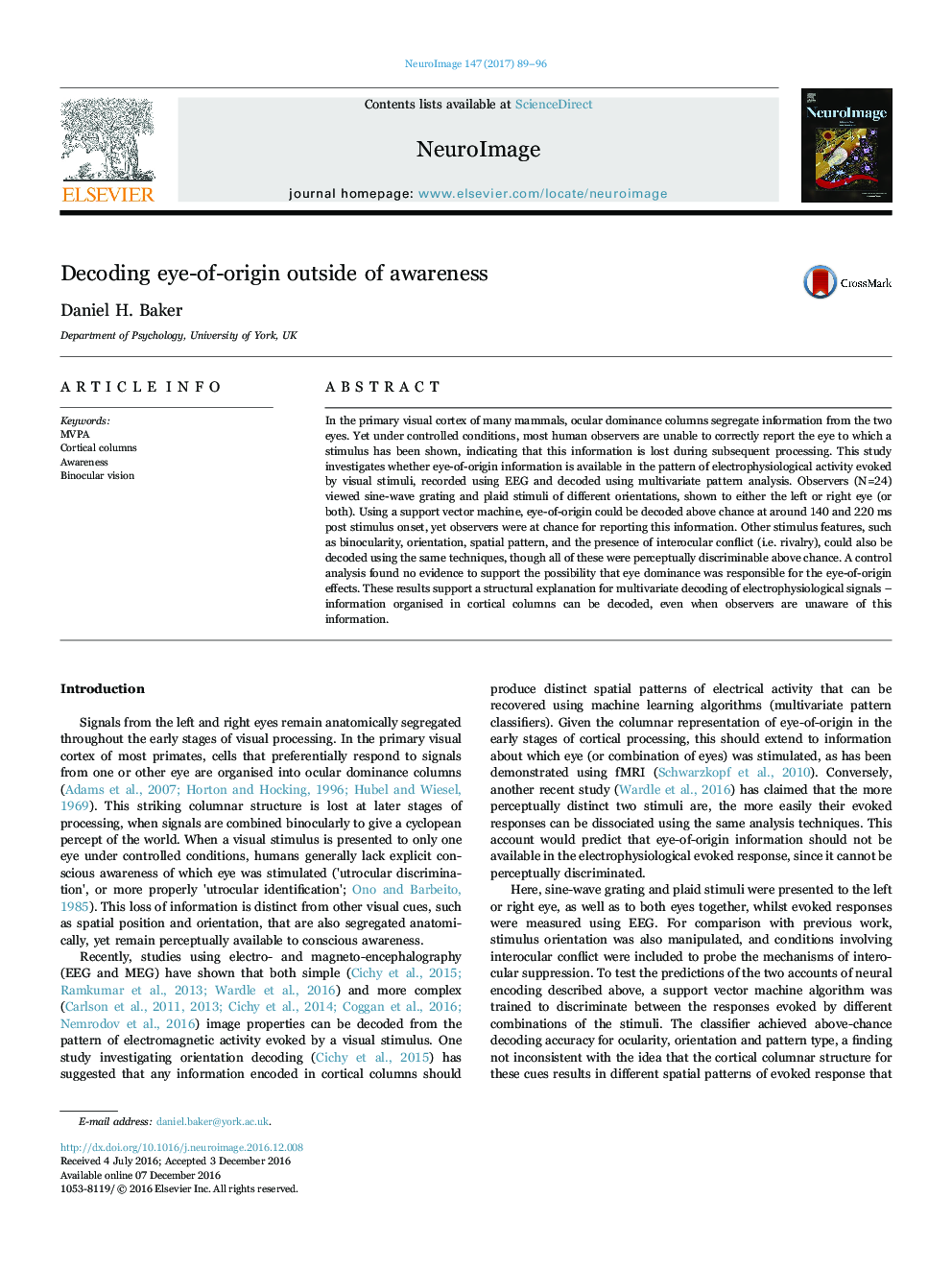| Article ID | Journal | Published Year | Pages | File Type |
|---|---|---|---|---|
| 5631486 | NeuroImage | 2017 | 8 Pages |
â¢Above-chance decoding of eye-of-presentation from EEG signals using MVPA.â¢Human observers were at chance for reporting which eye was stimulated.â¢Suggests that information encoded in cortical columns may determine classification.â¢Interocular conflict, orientation, spatial pattern and binocularity were also decodable.
In the primary visual cortex of many mammals, ocular dominance columns segregate information from the two eyes. Yet under controlled conditions, most human observers are unable to correctly report the eye to which a stimulus has been shown, indicating that this information is lost during subsequent processing. This study investigates whether eye-of-origin information is available in the pattern of electrophysiological activity evoked by visual stimuli, recorded using EEG and decoded using multivariate pattern analysis. Observers (N=24) viewed sine-wave grating and plaid stimuli of different orientations, shown to either the left or right eye (or both). Using a support vector machine, eye-of-origin could be decoded above chance at around 140 and 220Â ms post stimulus onset, yet observers were at chance for reporting this information. Other stimulus features, such as binocularity, orientation, spatial pattern, and the presence of interocular conflict (i.e. rivalry), could also be decoded using the same techniques, though all of these were perceptually discriminable above chance. A control analysis found no evidence to support the possibility that eye dominance was responsible for the eye-of-origin effects. These results support a structural explanation for multivariate decoding of electrophysiological signals - information organised in cortical columns can be decoded, even when observers are unaware of this information.
